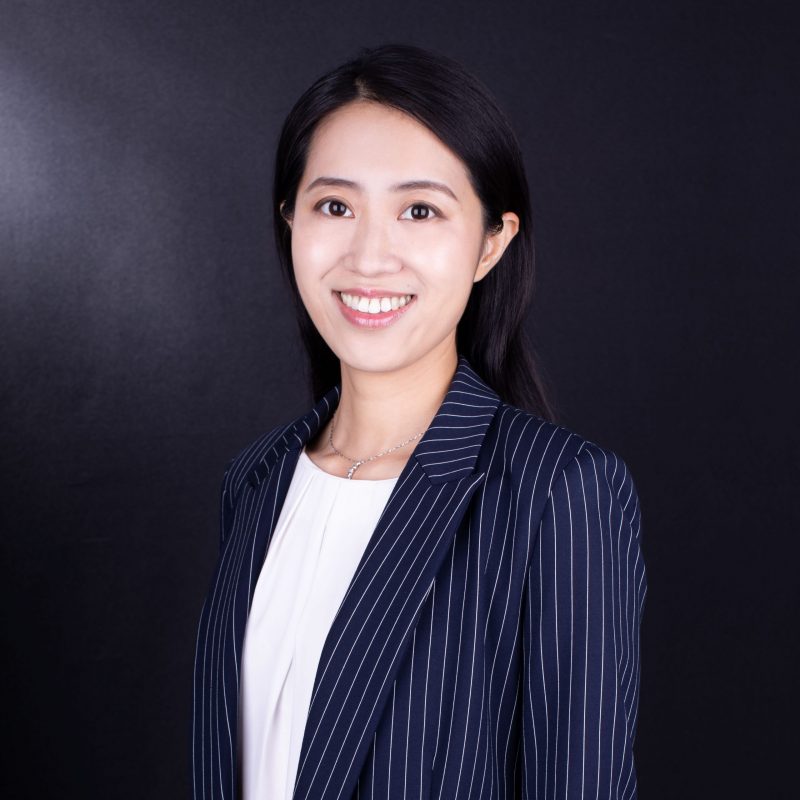We investigate whether short interest affects supply chain partners' investments. This investigation is important for understanding the real effect of short sellers in facilitating stakeholders' investment decisions. Prior research suggests that short interest conveys negative news in a timely manner, which predicts future deterioration in firm fundamentals. We predict and find that a supplier's future investments decrease with its major customers' short interest. Consistent with predictions, this result is more pronounced when customers' short interest is more informative about their future performance, when customers have a more opaque information environment, and when suppliers incur lower customer switching costs. The results are robust when we use various approaches to address endogeneity concerns and establish causality. Our findings suggest that short sellers provide valuable information to supply chain partners when making investment decisions.
Summer 2022
Contemporary Accounting Research
Interorganizational projects often suffer disruptions that require participating organizations to adapt in order to restore project operations. We study the role of communication style in facilitating adaptation to such disruptions. Whereas the literature on interorganizational communication has emphasized communication mode and frequency, we study the content and features of written communication in seven U.K. construction projects. Communication style mattered for adaptation quality in these projects, and we found that several properties of communication style were particularly important for adaptation: cost and information orientation, as well as informality, precision and authenticity. Moreover, managerial slack and organizational reputation were important precursors of communication style. These results provide novel insights into the role of communication style in adaptation to interorganizational project disruptions. We discuss the implications of these insights for research on interorganizational projects in operations and supply chain management.
June 2022
Journal of Operations Management
This paper shows that debt undermines relational incentives and harms worker morale. We build a dynamic model of a manager who uses limited financial resources to simultaneously repay a creditor and motivate a worker. If the manager can divert or misuse revenue, then debt makes the manager less willing to follow through on promised rewards, leading to low worker effort. In profit-maximizing equilibria, the firm prioritizes repaying its debts, leading to gradual increases in effort and wages. These dynamics can persist even after debts have been fully repaid. Consistent with this analysis, we document that a firm’s financial leverage is negatively related to measures of employee morale, wages, and productivity.
June 2022
Management Science
Building on the behavioral theory of the firm and institutional view, we examine how performance feedback (i.e., a focal firm’s performance relative to its industry peers) affects export intensity and how institution-related factors moderate this relationship. Using a sample of Chinese private manufacturing firms, we find that positive performance feedback lowers export intensity while the relationship between negative performance feedback and export intensity is insignificant. Moreover, outperforming firms are likely to decrease their export intensity even more when they are located in regions of better institutional development or have political connections. Underperforming firms with political connections tend to increase their export intensity. These findings enrich our understanding of the export behavior of emerging market firms.
June 2022
International Business Review
To stay competitive, high-technology manufacturers not only frequently source new technologies from their suppliers, but also financially support the development of these new technologies into component products or production tools. We consider a manufacturer that can either source a new but immature technology from a financially constrained supplier, or source a mature technology from an existing supplier if and only if the development of the new technology fails. To support the new technology, the manufacturer can choose to inject capital in the form of an equity or loan. The investment strategy not only affects the new supplier’s development effort and the probability of technical success (PTS), but also affects the existing supplier’s effort to improve the mature technology, which presents the manufacturer with a trade-off. Following the debt financing literature, we find that a loan contract is associated with a cost-shifting effect and often leads to a higher PTS. However, because the manufacturer not only maintains an investment but also a procurement relationship with the new supplier, we find a profit-sharing effect associated with an equity investment, which does not exist in the traditional equity issuance literature. In particular, we show that the profit-sharing effect can dominate the cost-shifting effect and lead to a higher PTS when the new supplier’s technological capability is sufficiently high. Nonetheless, we also show that the strategy that derives a higher PTS does not necessarily generate a higher payoff for the manufacturer. On the one hand, a loan can be preferred even when it leads to a lower PTS because the cost-shifting effect allows the manufacturer to offer a sufficiently low procurement payment while maintaining a sufficiently high PTS. On the other hand, when the existing supplier is very capable of reducing its costs, a loan can over-incentivize the new supplier to exert excessive effort and backfire.
June 2022
Management Science
Contemporary IT project teams demand that individual members generate and implement novel ideas in
response to the dynamic changes in IT and business requirements. Firms rely on multidisciplinary,
geographically distributed IT project teams to gather the necessary talent, regardless of their locations,
for developing novel IT artifacts. In this team context, individuals are expected to leverage dissimilar
others’ expertise for creating ideas during idea generation (IG) and then implement their ideas during
idea implementation (II), known as the IGII process. Although much has been done to explain individual
creativity, the extant literature offers little theoretical understanding on how to address the double-edged
effects of dispersions in both functional expertise (ExpDisp) and geographical locations (GeoDiss)—the
two defining characteristics of multi-disciplinary, cross-locational IT project teams—on individual
creativity and subsequent performance. Drawing on the IGII framework, we propose transactive memory
systems (TMSs) as a plausible team-level solution to tackle the challenge. With a multi-wave multi-level
dataset from 141 members and their supervisors from 35 IT project teams, we found that team-level TMS
and GeoDiss interactively moderate individual-level IGII processes in multi-disciplinary geographically
-distributed IT project teams during both II and IG, but in qualitatively different ways.
June 2022
MIS Quarterly
Problem definition: Providing fast and reliable delivery services is key to running a successful online retail business. To achieve a better delivery time guarantee policy, we study how to estimate and promise delivery time for new customer orders in real time. Academic/practical relevance: Delivery time promising is critical to managing customer expectations and improving customer satisfaction. Simply overpromising or underpromising is undesirable because of the negative impacts on short-/long-term sales. To the best of our knowledge, we are the first to develop a data-driven framework to predict the distribution of order delivery time and set promised delivery time to customers in a cost-effective way. Methodology: We apply and extend tree-based models to generate distributional forecasts by exploiting the complicated relationship between delivery time and relevant operational predictors. To account for the cost-sensitive decision-making problem structure, we develop a new split rule for quantile regression forests that incorporates an asymmetric loss function in split point selection. We further propose a cost-sensitive decision rule to decide the promised delivery day from the predicted distribution. Results: Our decision rule is proven to be optimal given certain cost structures. Tested on a real-world data set shared from JD.com, our proposed machine learning–based models deliver superior forecasting performance. In addition, we demonstrate that our framework has the potential to provide better promised delivery time in terms of sales, cost, and accuracy as compared with the conventional promised time set by JD.com. Specifically, our simulation results indicate that the proposed delivery time promise policy can improve the sales volume by 6.1% over the current policy. Managerial implications: Through a more accurate estimation of the delivery time distribution, online retailers can strategically set the promised time to maximize customer satisfaction and boost sales. Our data-driven framework reveals the importance of modeling fulfillment operations in delivery time forecasting and integrating the decision-making problem structure with the forecasting model.
May-June 2022
Manufacturing & Service Operations Management
Problem definition: We study how the government should design the subsidy policy to promote electric vehicle (EV) adoptions effectively and efficiently when there might be a spatial mismatch between the supply and demand of charging piles. Academic/practical relevance: EV charging infrastructures are often built by third-party service providers (SPs). However, profit-maximizing SPs might prefer to locate the charging piles in the suburbs versus downtown because of lower costs although most EV drivers prefer to charge their EVs downtown given their commuting patterns and the convenience of charging in downtown areas. This conflict of spatial preferences between SPs and EV drivers results in high overall costs for EV charging and weak EV adoptions. Methodology: We use a stylized game-theoretic model and compare three types of subsidy policies: (i) subsidizing EV purchases, (ii) subsidizing SPs based on pile usage, and (iii) subsidizing SPs based on pile numbers. Results: Subsidizing EV purchases is effective in promoting EV adoptions but not in alleviating the spatial mismatch. In contrast, subsidizing SPs can be more effective in addressing the spatial mismatch and promoting EV adoptions, but uniformly subsidizing pile installation can exacerbate the spatial mismatch and backfire. In different situations, each policy can emerge as the best, and the rule to determine which side (SPs versus EV buyers) to subsidize largely depends on cost factors in the charging market rather than the EV price or the environmental benefits. Managerial implications: A “jigsaw-piece rule” is recommended to guide policy design: subsidizing SPs is preferred if charging is too costly or time consuming, and subsidizing EV purchases is preferred if charging is sufficiently fast and easy. Given charging costs that are neither too low nor too high, subsidizing SPs is preferred only if pile building downtown is moderately more expensive than pile building in the suburbs.
May-June 2022
Manufacturing & Service Operations Management
This paper provides a general analysis of signaling under double-crossing preferences with a continuum of types. There are natural economic environments where the indifference curves of two types cross twice, such that the celebrated single-crossing property fails to hold. Equilibrium exhibits a threshold type below which types choose actions that are fully revealing and above which they pool in a pairwise fashion, with a gap separating the actions chosen by these two sets of types. The resulting signaling action is quasi-concave in type. We also provide an algorithm to establish equilibrium existence by construction.
May 2022
Econometrica

























